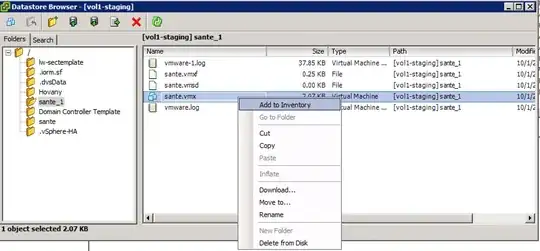I have a vmdk file and vmx file (and all the other files from someone elses datastore) copied onto my own data store. If I try to deploy from the vmx file, I get a vm with the name "unknown # (invalid)" where # is a sequential number depending on how many times I've tried. If I try to deploy from vmdk, I get an unbootable VM.
Is there an easy way to get a VM up and running from the VM folder?
Edit: When I try to deploy from VMX file, I get this vm:

and I am not able to edit the settings or power it up.
EDIT:
We fixed the issue. The file was given to us from VMPlayer and the hardware version was incompatible. We lowered the HW Version and exported as an .ova file. From there we were able to import into vCenter.

